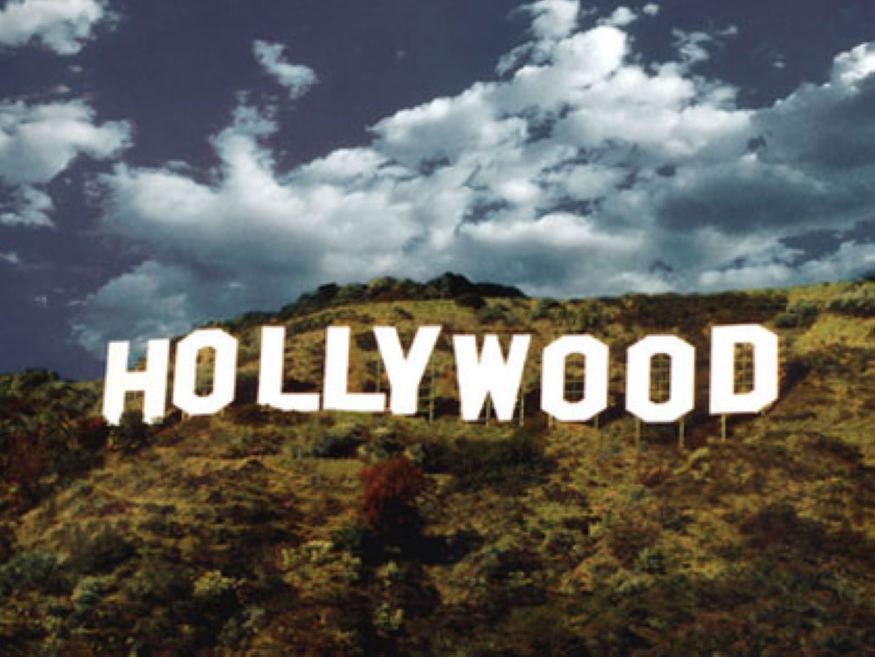
- •I. Introduction
- •II. Hollywood cinematography
- •1. Classical Hollywood cinema
- •(Metro-Goldwyn-Mayer logotype)
- •(Alfred Hitchcock – British and Hollywood film director, producer)
- •2. Style
- •3. Production
- •4. Periodization
- •5. Summary
- •(The symbol of classical Hollywood cinema on the Hollywood Hills)
- •III. Ukrainian and Russian cinema
- •1. Ukrainian cinema
- •(Olexandr Dovzhenko – Soviet screenwriter, film producer and director of Ukrainian descent)
- •2. Russian cinema
- •Mosfilm
- •(The logotype of Mosfilm)
- •IV. Russian Cinema Before and After Hollywood Influence
- •(Film «Ballad of a soldier»)
- •V. Hollywood's Russian Roots
- •(Milla Jovovich)
- •VI. List of literature
3. Production
The mode of production came to be known as the Hollywood studio system and the star system, which standardized the way movies were produced. All film workers (actors, directors, etc.) were employees of a particular film studio. This resulted in a certain uniformity to film style: directors were encouraged to think of themselves as employees rather than artists, and hence auteurs did not flourish (although some directors, such as Alfred Hitchcock, John Ford, Howard Hawks and Orson Welles, worked within this system and still fulfilled their artistic selves).
4. Periodization
While the boundaries are vague, the Classical era is generally held to begin in 1927 with the release of The Jazz Singer. Hollywood classicism gradually declined with the collapse of the studio system, the advent of television, the growing popularity of auteurism among directors, and the increasing influence of foreign films and independent filmmaking.
The 1948 U.S. Supreme Court decision, which outlawed the practice of block booking and the above-mentioned ownership and operation of theater chains by the major film studios (as it was believed to constitute anti-competitive and monopolistic trade practices) was seen as a major blow to the studio system. This was because it firstly cleared the way for a growing number of independent producers (some of them the actors themselves) and studios to produce their film product free of major studio interference, and secondly because it destroyed the original business model utilized by the studios who struggled to adapt.
"At the time of the Court decision, everyone said the quality, consistency, and availability of movies would go up and prices would fall. Quite the opposite happened. By 1955, the number of produced films had fallen by 25 percent. More than 4,200 theaters (or 23 percent of the total) had shut their doors. More than half of those remaining were unable to earn a profit. They could not afford to rent and exhibit the best and most costly films, the ones most likely to compete with television."
5. Summary
The unifying force behind the classical Hollywood style is motivation and conventions. In the development of the narrative every event is motivated, i.e. follows a causal relationship. In the same way the use of cinematic style is generally motivated by the narrative. The connection between narrative and cinematic style is highly conventional. Due to the dominance of the style viewers come to expect certain stylistic choices for certain narrative situations. For example if you have a hostage situation there will invariably be a cross-cutting between the rescuers and the hostage.
All of the above results in what Bordwell has called "an excesslively obvious cinema,". in that it follows a set of norms, paradigms, and standards that match and gratify viewers expectations. In other words by the end of a classical Hollywood film answers for all questions have been provided and one doesn’t leave the cinema perplexed and starteled as one would after some New Hollywood films or European Art films. From an ideological perspective, these practices discourage viewers critical inquiry of any particular film as well as the underlying practices of mainstream cinema in general. Although the authors do not support the anti-humanist arguments of theorists who applied the concept of interpellation to cinematic spectatorship, their conclusions in fact provide strong evidence for at least a serious consideration of interpellation and the power of classical Hollywood cinema (pic. 3).
(pic. 3)

